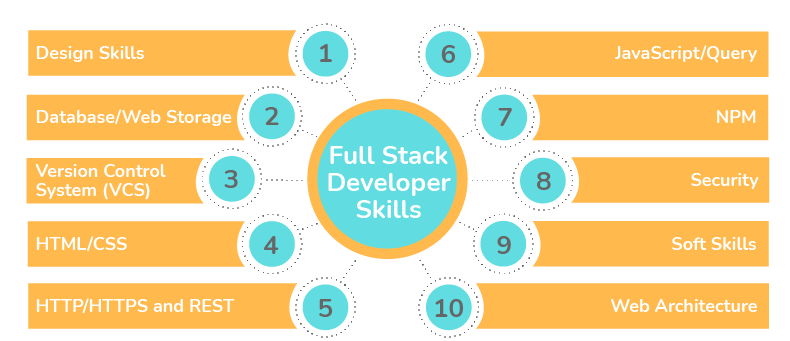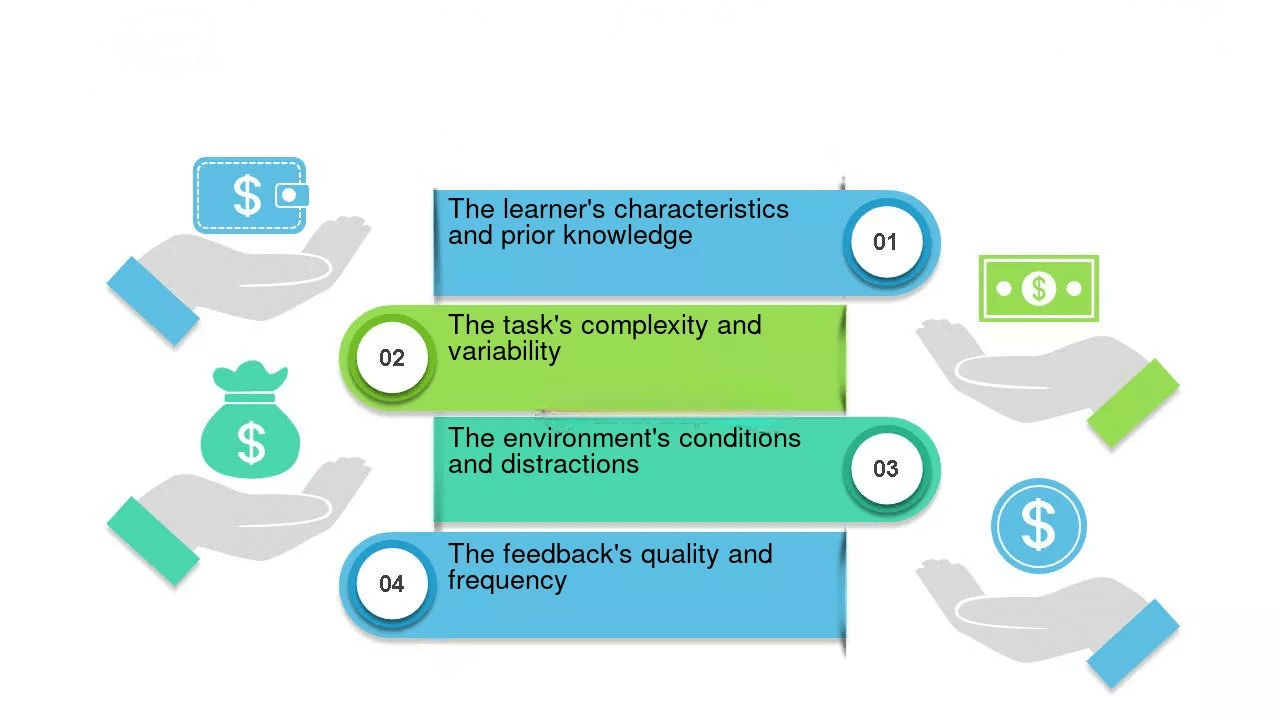
- Overview of MEAN Stack
- What is Full Stack Development?
- Technologies in MEAN
- Technologies in Full Stack (Varied)
- Use Cases and Real-world Applications
- Learning Curve and Flexibility
- Community and Ecosystem
- Scalability and Performance
- Cost and Time to Develop
- Employment Opportunities
- Industry Trends
- Which One to Choose and Why?
Overview of MEAN Stack
The MEAN stack is a powerful collection of JavaScript-based technologies used for building modern web applications, including MongoDB, Express.js, Angular, and Node.js each playing a vital role in developing robust, scalable, and maintainable solutions. MongoDB provides a flexible NoSQL database structure with JSON-like documents, while Express.js simplifies server-side logic on the Node.js platform. To strengthen your expertise in these technologies, explore our Web Designing & Development Courses designed to provide hands-on, industry-relevant training. Angular, developed by Google, is a dynamic front-end framework for creating single-page applications, and Node.js allows for efficient server-side JavaScript execution, ensuring consistency throughout the stack.
What is Full Stack Development
Full-stack development involves working on both the front-end and back-end of web applications, enabling developers to build complete, functional, and responsive digital products. A full-stack developer is proficient in everything from creating user-friendly interfaces using HTML, CSS, and JavaScript to implementing server-side logic with languages like Java, Python, PHP, Ruby, or Node.js. They also have a strong grasp of database management systems such as MySQL, PostgreSQL, or MongoDB, ensuring efficient data storage and retrieval. Full-stack development is not restricted to any one set of technologies; it spans a diverse range of tools and frameworks chosen based on project requirements. These developers are also skilled in using version control systems like Git for collaboration and code management, as well as deployment tools and platforms such as AWS, Heroku, or Docker to bring applications to life. To learn more about the process, explore How to Become a Web Developer Their ability to work across the entire development stack makes them incredibly valuable in the tech industry, as they can contribute to all phases of the software development lifecycle, adapt quickly to different project needs, and often bridge the gap between front-end and back-end teams.

Technologies in MEAN
The MEAN stack comprises the following core technologies:
- MongoDB: A NoSQL database that stores data in BSON (binary JSON) format. It allows for high scalability and flexibility in handling unstructured data.
- Express.js: A minimal and flexible Node.js web application framework that provides robust features for web and mobile applications.
- Angular: A front-end framework for building dynamic single-page applications using TypeScript. It offers a modular architecture, data binding, and a vast ecosystem of tools and extensions.
- Node.js: A JavaScript runtime built on Chrome’s V8 JavaScript engine. It enables the execution of JavaScript on the server side, allowing for real-time and event-driven applications.
- Real-time applications like chat apps or collaboration tools.
- Single Page Applications (SPAs) such as dashboards.
- E-commerce platforms.
- Cloud-native applications.
- RESTful API services. Full Stack Use Cases:
- Enterprise applications.
- Custom CRM and ERP solutions.
- Learning management systems.
- Blogging platforms and content management systems.
- Financial tech applications.
- MEAN Stack Trends: Increasing use in real-time apps, IoT applications, and mobile-responsive platforms.
- Full Stack Trends: There is a shift towards JAMstack, microservices, and serverless architecture. There is a growing demand for developers who can work across the stack and adapt to DevOps practices.
- Cloud platforms like AWS, Azure, and Google Cloud are becoming essential for both MEAN and full-stack applications.
- Emphasis on continuous integration/continuous deployment (CI/CD), containerization (Docker), and orchestration (Kubernetes) is transforming how applications are developed and deployed.
- Project Requirements: MEAN is ideal for rapid, scalable app development using JavaScript. Full stack is better for complex applications requiring diverse technology support.
- Team Expertise: Teams with strong JavaScript knowledge may benefit from the MEAN stack. Teams with varied skills can more effectively utilize full-stack development.
- Long-term Goals: Full stack provides more flexibility and is often a better choice for enterprises planning to scale and evolve their technology stack over time.
- Learning Path: Due to its single-language focus, beginners might find MEAN easier to learn. However, full-stack knowledge opens up more diverse career opportunities.
These technologies work in harmony to streamline the development process. For instance, data flows smoothly from the front-end Angular interface to the MongoDB database via Express and Node.js, all using JavaScript.
Technologies in Full Stack (Varied)
Full stack development is not confined to the MEAN stack; it encompasses a wide range of technology combinations, each suited to different needs. The LAMP stack comprising Linux, Apache, MySQL, and PHP has been a long-standing choice for traditional web hosting and content management systems. The MERN stack, a variation of MEAN, uses React.js instead of Angular, offering a component-based approach for building dynamic interfaces. Similarly, the MEVN stack swaps Angular with Vue.js, known for its simplicity and flexibility. Python-based stacks, often built with Django or Flask and paired with PostgreSQL, are favored for their readability and rapid development capabilities, and can integrate seamlessly with front-end libraries like React or Vue. The Java stack, typically using Spring Boot for the backend and technologies like JSP or React for the front end, is a strong choice for enterprise-level applications. For those looking to boost their credentials, consider pursuing a Web Developer Certification Ultimately, the selection of a stack depends on factors like the project’s goals, performance requirements, and the development team’s familiarity with the technologies involved, making full stack development a flexible and customizable approach to building web applications.
Excited to Obtaining Your web developer Certificate? View The web developer course Offered By ACTE Right Now!
Use Cases and Real-world Applications
MEAN Stack Use Cases:MEAN is particularly useful for startups and small-to-medium businesses looking to develop scalable applications quickly. With its broader technology options, large enterprises and organizations with diverse system requirements often favor full-stack.
Interested in Pursuing Web Developer Master’s Program? Enroll For Web developer course Today!
Learning Curve and Flexibility
MEAN Stack Learning Curve: MEAN uses JavaScript throughout, so the learning curve is relatively smooth for those familiar with the language. However, Angular can be complex for beginners due to its structure and use of TypeScript.
Whole Stack Learning Curve: Learning full-stack development can be more challenging due to the diversity of languages and frameworks involved. Developers must master front-end and backend technologies and understand databases, APIs, and deployment procedures. check out the Best Web Development Tools Full-stack development offers more flexibility. Unlike MEAN, which follows a set structure, developers can mix and match technologies according to the project’s requirements.

Community and Ecosystem
MEAN Stack: Each component of the MEAN stack has a strong community. Angular and Node.js are widely used and have extensive documentation and community support. MongoDB and Express also have active user communities and regularly updated resources.
Full Stack: The whole stack ecosystem is even broader, encompassing various communities for each technology. The wealth of resources available to full-stack developers is immense, from Python and Django to React and Ruby on Rails. Open-source contributions, forums like Stack Overflow, GitHub repositories, and educational content make MEAN and full stack accessible to learners and professionals alike.
Scalability and Performance
The MEAN stack offers strong scalability and performance benefits, particularly for applications with high I/O demands. Node.js’s non-blocking, event-driven architecture allows it to handle multiple requests simultaneously, making it well-suited for real-time applications and services that require fast response times. MongoDB enhances scalability further by supporting horizontal scaling through sharding, allowing databases to grow efficiently with increasing data loads. On the client side, Angular’s modular structure contributes to performance by enabling efficient code organization and faster rendering. Explore the Role of a Full Stack Developer In contrast, scalability in full-stack applications largely depends on the specific technologies used. For example, using Spring Boot for the backend and PostgreSQL as the database can support large-scale enterprise systems with complex data needs. Full-stack development often leverages microservices architecture, which allows individual services to scale independently, enhancing flexibility and maintainability. Regardless of the stack, both MEAN and full-stack solutions can achieve high scalability when combined with best practices like caching, load balancing, and database optimization techniques, ensuring robust performance as applications grow.
Cost and Time to Develop
MEAN Stack: MEAN is cost-effective for rapid development. Using JavaScript across the stack reduces the need for multiple specialized developers. Open-source tools and frameworks further minimize licensing costs.
Full Stack: Development time and cost in full stack can vary significantly. Projects using more mature, enterprise-grade tools might incur higher costs due to licensing and resource needs. However, full stack allows for better customization and may be more suitable for long-term, complex projects. Freelancers and startups may prefer MEAN due to its simplicity and unified tech stack, whereas corporations may invest more in diverse full-stack solutions for better functionality and integration.
Employment Opportunities
MEAN Stack Jobs: Many startups and mid-size companies actively hire MEAN stack developers for their agility in building MVPs and scalable web apps. Standard job titles include MEAN Stack Developer, JavaScript Developer, and Front-end/Backend Engineer.
Full Stack Jobs: Full-stack developers are in high demand across industries. Their versatility makes them suitable for roles such as Full-Stack Engineer, Software Developer, and DevOps Engineer. Companies value their ability to handle multiple roles and responsibilities. To understand the integration of various technologies in web development, explore What is an HTML Iframe Salary levels for full-stack developers tend to be higher, especially for those with experience in enterprise-level applications and newer technologies like cloud-native development and microservices.
-
Industry Trends
Which One to Choose and Why
Choosing between MEAN and full stack depends on various factors:
In conclusion, both MEAN and full stack have their merits. MEAN is perfect for quick, modern web app development with consistent language usage. While more demanding, full stack offers flexibility, a broader scope, and higher career growth potential. For those looking to enhance their skills in web development, enrolling in our comprehensive Web Designing Training which covers all essential front-end and back-end technologies, can significantly boost your career prospects. Developers and organizations should assess their goals, team strengths, and application complexity before choosing.

